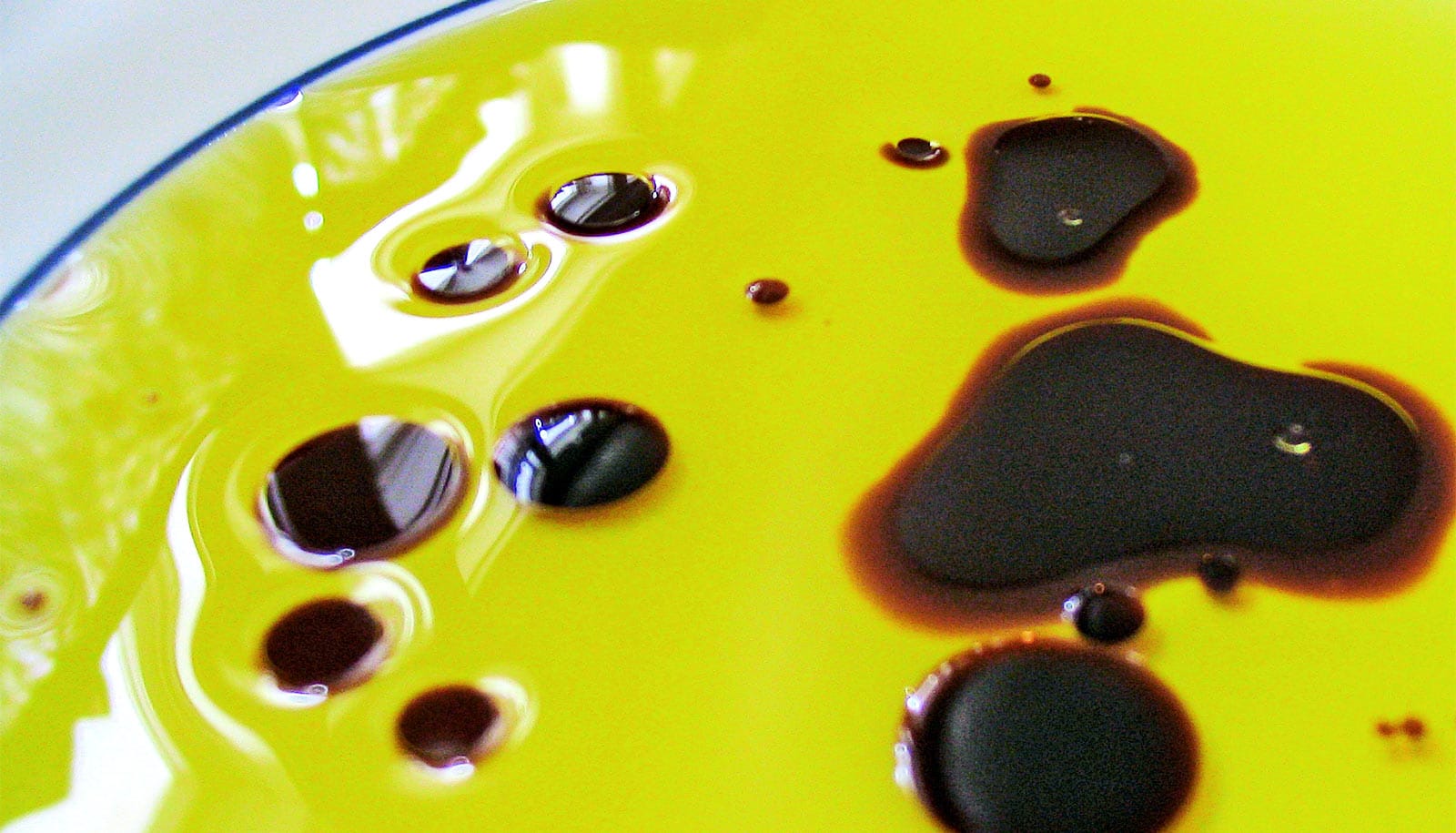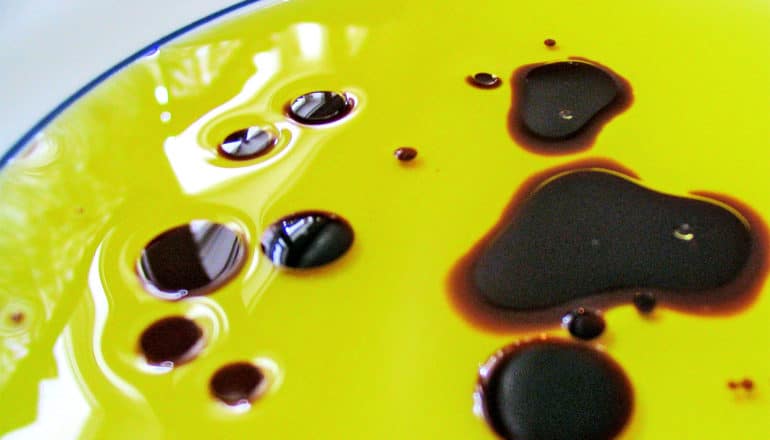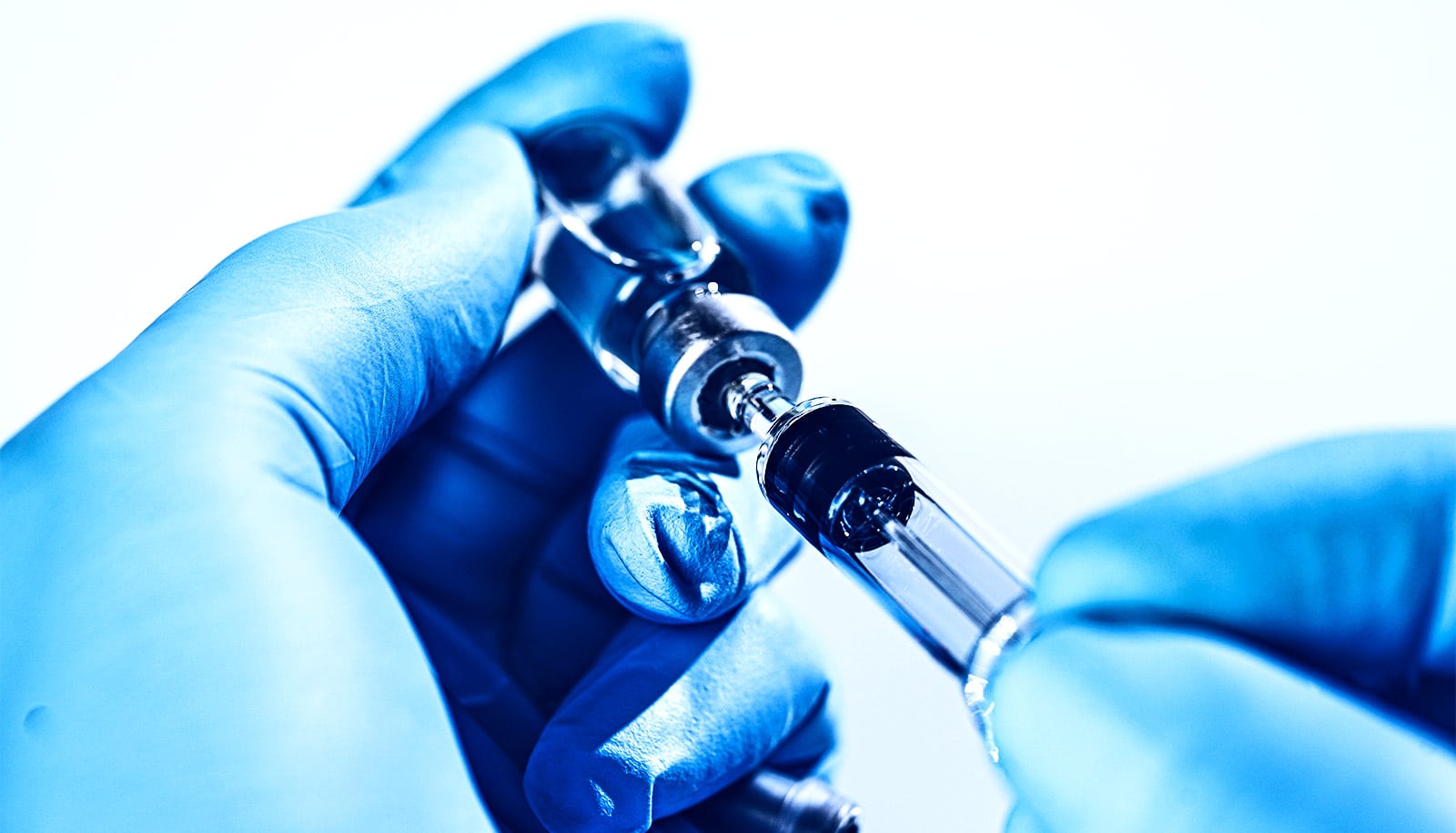
Protein droplets normally form by LLPS, a phenomenon that is conceptually similar to the process by which oil and vinegar separate from one another, forming coexisting liquid droplets. When this process goes awry, researchers say, it may contribute to diseases like ALS. (Credit: Tim Ereneta/Flickr )
Broken ‘rules’ lead to protein clumps in diseases like ALS
New research unveils a way to "read" proteins to see if they'll clump together and contribute to neurodegenerative diseases like ALS.

New research uncovers the underlying rules that, when broken, contribute to neurodegenerative diseases such as ALS.
Clumps of proteins inside cells are a common thread in many neurodegenerative diseases, including amyotrophic lateral sclerosis (ALS) or Lou Gehrig’s disease.
These clumps, or solid aggregates of proteins, appear to be the result of an abnormality in the process known as liquid-liquid phase separation (LLPS), in which individual proteins come together to form a liquid-like droplet.
To understand how the process goes awry, researchers need a better understanding of the mechanism that drives LLPS in the first place. What is it about any protein that would cause it to condense into a liquid?
Reducing the number of stickers destabilizes a droplet such that it sheds protein more efficiently and more proteins accumulate in the dilute phase. (Credit: Washington U. in St. Louis)
The new research has uncovered the key to translating the patterns written into specific types of protein sequences that contribute to LLPS.
Importantly, researchers have also uncovered how specific arrangements of amino acids, which stray from the pattern, can negatively affect phase separation and give rise to the formation of solid aggregates instead of liquids.
Like oil and vinegar
When certain cells are stressed, which happens regularly, cellular response proteins condense into membraneless organelles—squishy, liquid-like droplets that have defined boundaries but no delimiting membranes.
The droplets form via LLPS, a phenomenon that is conceptually similar to the process by which oil and vinegar separate from one another, forming coexisting liquid droplets.
Although it is called phase separation, LLPS is really a process of coming together, or condensing. Loosely condensed proteins are in a liquid-type phase; the more tightly packed they are, the more solid they become.
Under some circumstances, often due to mutations, an errant process causes some of the material in these protein-rich droplets, also known as biomolecular condensates, to morph into more solid aggregates.
Intrinsically disordered regions (IDR) of the protein drive the condensation, in many cases. These are stretches of the protein with no defined three-dimensional shape, and yet they feature prominently in key functional roles, especially in the brain.
Rohit Pappu, professor of engineering at the McKelvey School of Engineering at Washington University in St. Louis, and his colleagues had shown that certain parts of the IDRs were sticky—they had a tendency to stick to each other on the same protein, or on those nearby.
These “stickers,” which are actually amino acids on the protein chain, and the material between them, called “spacers,” are the basis for the sticker-and-spacer model, a framework used to describe LLPS.
Getting the bigger picture
To try to identify the key stickers that are responsible for driving phase separation, the researchers started by observing interactions essentially down at single amino acid resolution using nuclear magnetic resonance spectroscopy.
The results of their experiments uncovered which amino acids were sticky, but couldn’t provide the kind of holistic picture needed to fully understand the relationship between stickers, spacers, and LLPS.
The researchers then developed an open source computational approach known as PIMMS (Polymer Interactions in Multicomponent Mixtures) to arrive at a quantitative and predictive understanding of the interactions among stickers that drive phase separation.
They used additional lab experiments at St. Jude Children’s Hospital to test and confirm their predictions.
Together, the models and experiments revealed new aspects of the relationship between these stickers and phase separation.
Although the model showed variations in the number and placement of stickers, “the patterning of the stickers along the chain was very well conserved,” Pappu says. “When you see something that is very well conserved in evolution, you decide that it is evolutionarily important.”
So, naturally, the researchers used PIMMS to see what would happen if the important pattern was changed.
The team asked, “What happens if we just bring all of these stickers and put them right next to one another?” The first key finding showed the interactions between the stickers became so strong that proteins began sticking to each other, piling up and growing, eventually growing dense enough to become more solid than liquid.
Spacers between the stickers
The second key finding was a better understanding of the importance of the regions between the stickers—the spacers. Like noncoding or “junk” DNA, the spacers at first showed some interesting traits, but did not seem to have an integral role in protein’s functioning.
It turns out, spacers are crucial to understanding LLPS. “The spacers dilute the interaction strength of the stickers, which allows for the formation of a liquid,” says Tanja Mittag of St. Jude. “Without spacers, the stickers would be too close and proteins would always condense to solids.
Understanding the rules that drive LLPS gives researchers a new way to “read” proteins to determine whether they will condense into a liquid or into the more problematic solid form.
LLPS is relevant to more than neurodegenerative diseases. It also has the potential to transform our understanding of the underlying mechanisms of many biological processes. “This model is relevant to understanding cancers,” says Mittag, because of its application to different types of proteins.
“We’re talking about something that’s written into a molecule giving you something that’s manifest almost at the cellular scale,” Pappu says. “Now you can play engineer and design things. You can think about neurodegenerative disorders and make sense of what might be going wrong.”
The research appears in the journal Science.
Funding for the research came from St. Jude Children’s Research Hospital Research Collaborative on Membraneless Organelles in Health and Disease; the US National Science Foundation; the Human Frontier Science Program; the American Federation for Aging Research; and ALSAC, the fundraising and awareness organization of St. Jude.
Source: Washington University in St. Louis
The post Broken ‘rules’ lead to protein clumps in diseases like ALS appeared first on Futurity.
Share this article:
This article uses material from the Futurity article, and is licenced under a CC BY-SA 4.0 International License. Images, videos and audio are available under their respective licenses.
Related Articles:
‘Barcode’ IDs special glial cells in the brain
June 25, 2020 • futurityDrug shows promise for fighting rare ALS
July 10, 2020 • futurityLinks/images:
- https://www.futurity.org/protein-droplets-cells-2012352/
- https://www.futurity.org/sod1-protein-clusters-neurons-als-1735032/
- https://www.futurity.org/als-neurons-brains-1886412/
- https://doi.org/10.1126/science.aaw8653
- https://source.wustl.edu/2020/02/collaboration-lets-researchers-read-proteins-for-new-properties/
- https://www.futurity.org/als-protein-clumps-neurodegenerative-diseases-2290682/
- https://www.futurity.org


